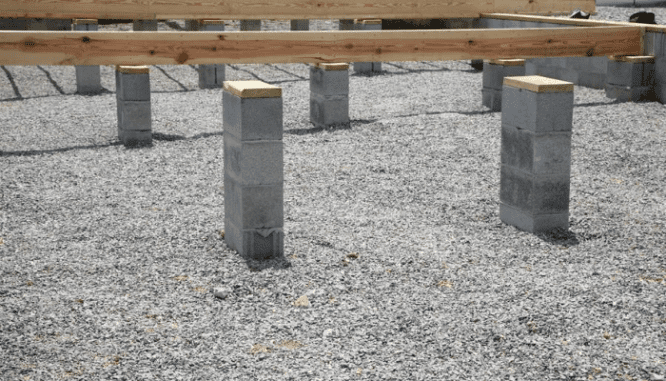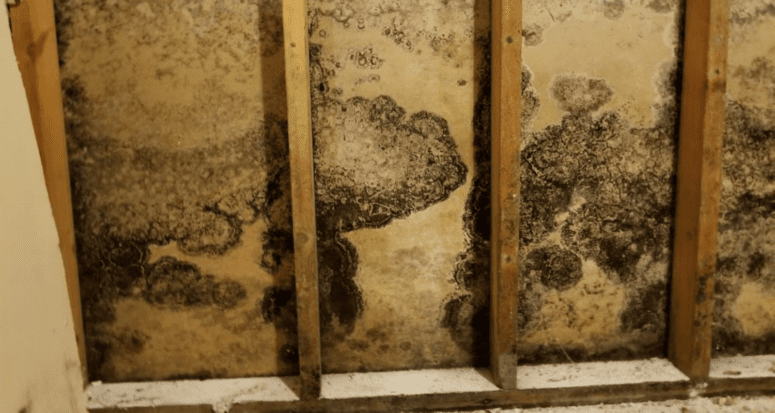Help! I Need to Know ‘What Is a Crawl Space’ Before Buying a House
- Published on
- 4 min read
-
 Evette Zalvino Contributing AuthorClose
Evette Zalvino Contributing AuthorClose Evette Zalvino Contributing Author
Evette Zalvino Contributing AuthorEvette is just your average HGTV fan who dreams of having a home worthy of being on one of those shows. When she isn't writing for HomeLight, she's working at her local real estate office. In her downtime, you'll find her searching for the next great hiking trail in her area.
Imagine walking into your dream home. Have you thought about what’s downstairs?
When considering foundation types in the United States, you might think that basements are the most common. That’s an understandable assumption, but it’s not accurate.
Of the three major types of residential home foundation (full or partial basement, crawl space, and concrete slabs), 54% of houses are built on concrete slabs, and only 30% have a full or partial basement. So, what kind of foundations do the remaining 16% of houses have? Fifteen percent (roughly 27 million) of these houses have crawl spaces, and the remaining 1% are built on stilts or pilings.
Now, we all know what basements are, and a concrete slab is just that — a slab of concrete. However, a common question homebuyers ask is: “What is a crawl space?”
The short answer: A crawl space is an alternative to a traditional basement; it creates a barrier between the ground and the floor of your house.

What is a crawl space: the long answer
A crawl space uses footings and walls (either made of cinder blocks or poured concrete) to support the weight of the house. The walls can be up to 5 feet high, but the typical crawl space is between 1 to 3 feet high, which means the homeowner will have to crawl to get around — hence the name.
Crawl spaces are also unfinished, making it easy to access the plumbing, gas hookups, ventilation, and wiring when needed.
Homeowners cannot count the crawl space as livable space like you potentially could with a basement, but you can use the crawl space to store smaller outdoor items. However, this wouldn’t be in your best interest if your house is in a flood zone. In a flood zone, the crawl space will act as a buffer between the water table and your floors because flood water will fill the crawl space before it floods the house. You also won’t want to use the space as extra storage if you have problems with mold, moisture, or pests.
Ventilated crawl space vs. conditioned crawl space
There are two types of crawl spaces: ventilated and conditioned.
Ventilated crawl spaces
Ventilated crawl spaces have several air vents located at the top of the foundation wall. The vents are situated across from one another so that outside air flows freely throughout the space. However, it’s been recognized that vents can do more harm than good because the airflow is uncontrolled and unconditioned, meaning that the air (whether it is hot or cold) might be full of moisture.
It is possible to insulate a vented crawl space, but it’s not easy. Typically, insulation is installed between floor joists, but trying to install insulation around plumbing, wiring, and other obstructions is challenging. As challenging as it may be, some new homes use this installation method.
Conditioned crawl spaces
Conditioned crawl spaces feature insulated walls and a tight vapor barrier on the floor that’s connected to the HVAC system. This type of crawl space does not have vents to the exterior, and it doesn’t need insulation in between the floor joists.
It’s important that a crawl space has a vapor barrier covering the soil to reduce any additional moisture from the ground. Without this vapor barrier, crawl spaces can capture even more humidity. The vapor barrier also helps to keep the temperature stable year round, which helps to keep the heating and cooling system working efficiently.

Vapor barriers, explained
We mentioned that crawl spaces need a vapor barrier, but what exactly is that? Randy Reeds, a top-rated real estate agent from Kent County in Michigan who works with 72% more single-family homes than the average agent in his area, explains:
“There are fabrics contractors can put down to act as a vapor barrier in a crawl space that’s not concrete. But, today they’ll lay heavy plastic under the entire house to seal it — not too dissimilar to rubberized roofing material.”
If you have a crawl space with a dirt floor, you can use cross ventilation, a dehumidifier, or an exhaust fan to get rid of any excess moisture.
Keep in mind that the amount of moisture a dehumidifier can remove is dependent on how many quarts of water it can remove per hour. Also, there is moisture in ambient air, and it’s important to keep air circulating to and from the dehumidifier. This means you’ll probably want to install several fans throughout the crawl space to increase airflow.
In the event of a heavy rainstorm, the crawl space may become flooded and the water will have to be pumped out, either by a professional, or you can have a sump pump installed.
Benefits of a crawl space
Access
The biggest benefit to a crawl space over a concrete slab foundation is that you can more easily access the systems we mentioned above: the wiring, plumbing, gas hookups, and ventilation. If ever you have a problem with these parts of your home, you or a contractor can crawl into the crawl space under the house to make the necessary repairs.
Cost
Basements (finished or unfinished) grant homeowners access to the aforementioned systems and have more livable space (something that 44% of real estate agents say their clients are looking for), and a crawl space does not.
However, the trade-off is that when you’re building a house, a crawl space is going to save you a lot of money — and most basements aren’t included in a home’s square footage, anyway. On average, a crawl space foundation is going to cost between $8,000 and $21,000, whereas it would cost between $18,000 and $30,000 to build a basement, depending on overall square footage.
Versatility
Builders use crawl space foundations when a regular basement isn’t a possibility, such as on a waterfront property or where the ground is sloped. Crawl spaces are also the foundation of choice in areas where the ground is prone to excessive dampness or to termites.

Disadvantages of a crawl space
Moisture
Hot and humid climates are not a crawl space’s best friend — especially if it’s an older home and the crawl space is ventilated. The excessive moisture can threaten the integrity of the wooden structure components, which can lead to rot. ‘
The average cost to replace rotted support beams can cost between $1,500 to $5,000, depending on what material you are using (wood or steel) and how accessible the problem is to repair.
Fungus, mildew, and mold
“If there’s a water issue in any way, the combination of that and poor ventilation, you end up with mold and mildew that rots the floor joists. Then you also have the health issues because you’re walking on a floor with a lot of mold underneath,” Reeds explains.
When the moisture problem isn’t addressed, the crawl space is the perfect place for microorganisms like mold and mildew to multiply. Should the air from the crawl space circulate throughout the home, the harmful microorganisms and bacteria can as well. This can spell disaster for residents of the home who have respiratory problems or allergies!
Pest infestations
Crawl spaces that aren’t sealed appropriately are susceptible to pest intrusion. Rodents and small animals are attracted to the warmth and moisture found there. A pest infestation can cause air quality problems due to their dander and fur, but their droppings are also a health issue, too. Along with small animals, insects like termites can cause damage to the structural elements, HVAC ducts, and wiring.
Poor insulation
Crawl spaces that haven’t been sealed properly or insulated well are going to be a burden on the heating and cooling systems. When the outdoor air is hotter (or colder) than the indoor air, the furnace or heater is going to have to run longer to maintain temperature, and vice versa.
Should you buy a house with a crawl space?
You’ve found a home that you want to make an offer on, but it has a crawl space. Should you go ahead and make an offer?
You can as long as the crawl space has been inspected by a professional and they say there’s no rot, no standing water, and the walls and footings are in good condition.
Along with proper ventilation, make sure there aren’t any holes in the ground, which could allow rodents and small animals inside the space. Any vents should have insect screens on them to prevent bees, hornets, and other insects from getting under the house.
Remember, a crawl space will make it much easier to access the various systems in the home should something go awry. You just have to make sure that there is proper ventilation to prevent excessive humidity, which can be problematic for the structure of the house and for the home’s occupants.
Header Image Source: (William Hager / Shutterstock)
